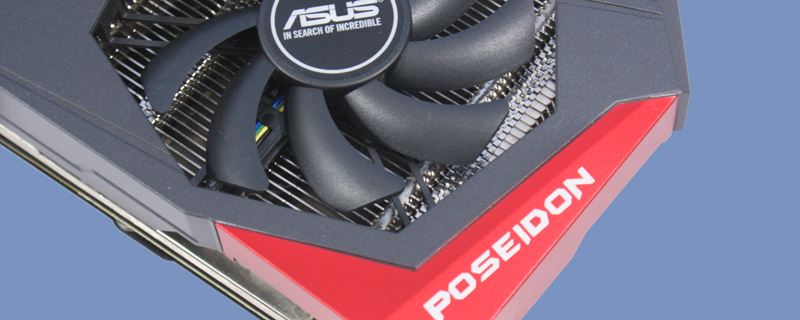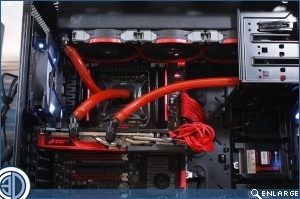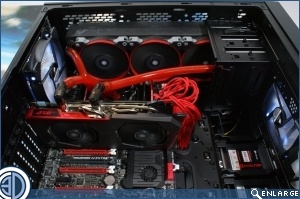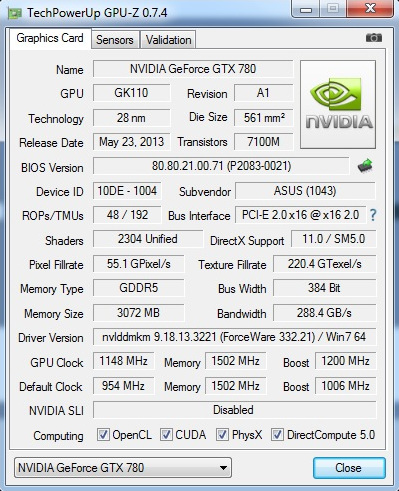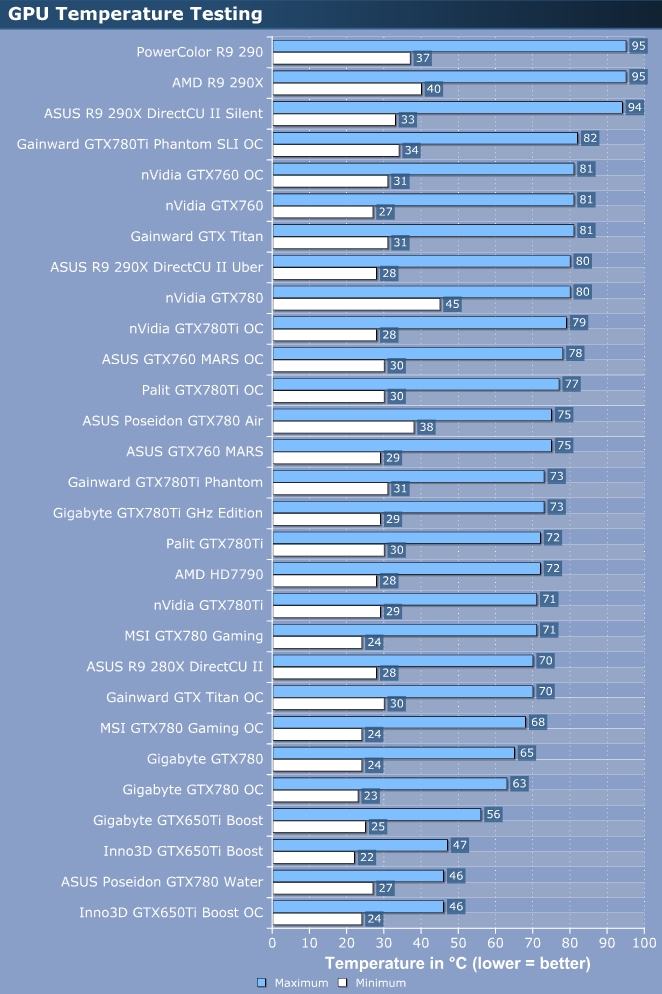ASUS ROG Poseidon GTX780 Review
Test Setup
ASUS ROG Poseidon GTX 780
Intel Core i7-3960X @ 4.6GHz
ASUS Rampage IV Extreme
Corsair Dominator Platinum
Corsair AX1200i
Corsair Neutron GTX
Corsair H100i
Windows 7 x64
XSPC RX360 Radiator
XSPC Raystorm CPU Block
XSPC Bay Reservoir with D5 Pump
3x Corsair SP120 fans with FSR’s fitted
It’s worth noting that even with our 90° barbs, the Poseidon is still fairly wide when watercooled and thus you should make sure that you’re not looking to fit it into a narrow chassis.
Overclocking
As always with some extra cooling it would be easy to imagine that there is a swathe of extra performance on tap, but as we know well the silicon lottery ensures that, barring some major cherry picking, you’ll more than likely end up with a chip that performs much the same as any other.
So it is in some regard unsurprising that the Poseidon hits nearly 200MHz more than it comes out of the box. We’d expect nothing less from a ROG branded card. The primary function of the cooler though is to cool, as we’ll see in our temperature graph.
Temperatures
With air-cooling the Poseidon is right on point, with a maximum of 73°C under loading. Given that some compromise has to be made for the water-cooling element, this is very good indeed. Under water it is vastly superior, as we’d expect. It’s a fantastic way of demonstrating the difference between air and water. 30°C is nothing to sniff at.



